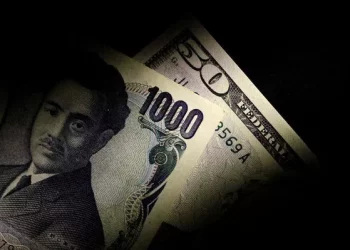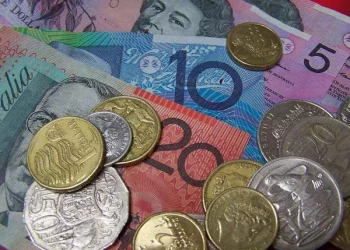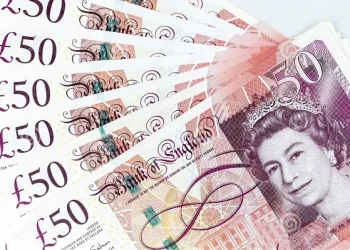The world of foreign exchange (forex) is vast and dynamic, with currencies constantly fluctuating in value due to a variety of factors. One of the most common questions asked by both individual and business traders alike is: “What is INR 50,000 to USD?” In this article, we will explore how the conversion of Indian Rupees (INR) to US Dollars (USD) works, factors affecting exchange rates, the importance of understanding currency conversion, and how traders can leverage this knowledge for smarter financial decisions.
Understanding Currency Exchange Rates
A currency exchange rate refers to the value of one country’s currency in relation to another. For example, the exchange rate between the Indian Rupee (INR) and the US Dollar (USD) tells us how much one Indian Rupee is worth in US Dollars, or vice versa.
When we ask, “What is INR 50,000 to USD?”, we are essentially looking for the value of INR 50,000 in US Dollars. To find this value, the current exchange rate between the Indian Rupee and the US Dollar must be considered. The exchange rate between the two currencies is typically quoted as the number of units of the second currency (USD) needed to buy one unit of the first currency (INR).
For example, if the exchange rate is 1 INR = 0.012 USD, then INR 50,000 would be equivalent to:
50,000×0.012=600 USD
However, exchange rates fluctuate continuously due to a variety of factors, which means the actual amount in USD could vary over time.
Factors Affecting the INR to USD Exchange Rate
Exchange rates are influenced by a variety of factors, both economic and geopolitical, that affect the relative value of one currency against another. Understanding these factors is key to knowing how INR 50,000 will convert to USD at any given time. Here are some of the major determinants:
1. Interest Rates
Central banks around the world, including the Reserve Bank of India (RBI) and the Federal Reserve in the United States, set benchmark interest rates. Higher interest rates in a country typically attract foreign investment, increasing demand for that country’s currency. As more people or businesses buy the local currency to invest in the country, the value of the currency rises. Conversely, lower interest rates can decrease the currency’s value.
For example, if the US Federal Reserve increases interest rates, the USD becomes more attractive to investors, increasing the demand for USD and consequently, strengthening its value against other currencies, including the INR.
2. Economic Performance
The overall economic health of a country plays a critical role in determining the value of its currency. A strong economy with low unemployment, high GDP growth, and rising industrial output typically leads to a stronger currency. On the other hand, a weaker economy, with slow growth and high unemployment, can cause a currency to depreciate.
For instance, if India’s economy is performing well with high growth in sectors like IT, manufacturing, and exports, it can increase demand for the INR as international businesses and investors look to capitalize on the country’s success. Similarly, if the US experiences economic growth, the USD may strengthen relative to other currencies.
3. Inflation Rates
Inflation is another crucial factor in determining the value of a currency. A country with high inflation typically sees its currency weaken relative to countries with lower inflation rates. This is because high inflation erodes purchasing power, making the currency less attractive to foreign investors.
If India has a higher inflation rate than the US, the value of the INR would likely depreciate relative to the USD. Conversely, if inflation in the US is high, the value of the USD would decrease, potentially making the INR stronger.
4. Political Stability and Economic Policies
Political stability and economic policies can significantly influence the exchange rate of a currency. Stable governments and favorable policies tend to foster confidence in the economy, which in turn increases foreign investment and demand for the country’s currency. On the other hand, political instability, such as frequent changes in leadership or uncertainty regarding government policies, can make a country’s currency less attractive to investors.
For instance, if India undergoes political instability, the INR might weaken against the USD as investors move their money to safer assets in more stable economies. Similarly, if there is uncertainty in the US government’s fiscal policy, it may weaken the USD.
5. Supply and Demand in the Forex Market
In the foreign exchange market, the supply and demand for currencies determine their value. The more demand there is for a particular currency, the higher its value will rise relative to other currencies. Conversely, if demand falls, the currency’s value will drop.
For example, if a significant number of investors are looking to buy Indian stocks, they need INR to complete their transactions, leading to an increase in the demand for INR. If more people want to convert INR to USD, the value of INR might fall relative to the USD.
6. Global Events and Geopolitical Risks
Global events, such as natural disasters, wars, and economic crises, can have an immediate and significant impact on exchange rates. For instance, a global financial crisis can lead to a sharp depreciation in many currencies, including the INR, as investors flock to safer assets like the USD.
Geopolitical tensions, such as trade wars, military conflicts, or political unrest, can also cause significant fluctuations in exchange rates. A trade war between the US and China, for example, could impact global supply chains, affecting currencies like the INR and USD.
The Role of Forex Traders in Currency Exchange
Foreign exchange traders play a crucial role in determining the value of currencies in the market. They buy and sell currencies based on their expectations of future price movements. By understanding the factors that influence exchange rates, forex traders can anticipate trends in the currency market and make decisions that help them profit from fluctuations in the INR/USD exchange rate.
For instance, if a trader believes that the INR will weaken relative to the USD due to economic or political factors, they may choose to sell INR and buy USD in anticipation of a price drop. Conversely, if they think the INR will strengthen, they may buy INR and sell USD. This practice, known as currency speculation, is the foundation of forex trading.
Understanding Forex Market Terminology
When trading currencies, it’s essential to understand key terms and concepts. Here are a few key terms every forex trader should be familiar with:
Bid Price: The price at which a currency can be bought in the market.
Ask Price: The price at which a currency can be sold in the market.
Spread: The difference between the bid and ask prices. This is how brokers make money in the forex market.
Pip: A pip is the smallest unit of measurement in forex trading, representing a change in value in a currency pair. In most cases, one pip equals 0.0001 for currency pairs like USD/INR.
How Forex Traders Determine When to Buy or Sell INR to USD
Forex traders analyze charts and economic indicators to predict how currency prices will move. Technical analysis involves studying past market data to identify patterns, while fundamental analysis looks at economic, political, and social factors that may impact the currency’s value.
For example, if the Federal Reserve is expected to raise interest rates, traders may anticipate a strengthening of the USD and may decide to buy USD while selling INR. Similarly, if India’s economy shows signs of strong growth, traders may expect the INR to strengthen and could buy INR, expecting it to appreciate against the USD.
Practical Applications of INR to USD Conversion
Knowing how to convert INR 50,000 to USD can have several practical applications, whether you are a businessperson, investor, or an individual traveling abroad. Here are some scenarios where understanding the conversion rate is crucial:
1. International Travel
If you are planning a trip to the United States, understanding the conversion rate between INR and USD will help you estimate how much money you need to exchange. This will also help you budget for your trip, making sure you have enough USD for expenses while you’re in the US.
2. International Business Transactions
If you are doing business with US companies or clients, understanding the conversion rate is vital for pricing goods and services accurately. For example, if your business in India exports products to the US, understanding the INR/USD exchange rate will help you determine the value of your sales in US Dollars.
3. Investment Decisions
For investors looking to invest in foreign markets, it’s important to monitor the exchange rate between INR and USD, as changes in the exchange rate can affect the profitability of foreign investments. A strong INR relative to the USD may make US stocks or assets more affordable, whereas a weaker INR could make them more expensive.
4. Remittances
Many people in India have family members working abroad, particularly in the United States. Understanding the exchange rate is crucial for both sending and receiving money through remittances. A favorable exchange rate can mean that the recipient gets more INR for every USD sent, which is especially important for families relying on foreign income.
Conclusion
Understanding how INR 50,000 converts to USD is more than just a mathematical calculation; it is part of a much larger world of currency markets and economic forces. Exchange rates are influenced by a variety of factors, including interest rates, economic performance, inflation, political stability, and supply and demand dynamics in the forex market. Forex traders use these factors to predict currency movements and make profitable trades.
For anyone involved in international business, traveling abroad, or investing in foreign markets, understanding how the INR/USD conversion works is crucial for making informed financial decisions. By staying updated on market conditions and understanding the fundamentals of currency conversion, you can better navigate the complexities of the foreign exchange market.
Remember, the value of INR 50,000 in USD will change with fluctuations in the exchange rate. Therefore, it’s always important to check the current rate before making any conversions, whether for business or personal reasons.
Related Topics:



























